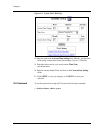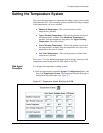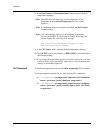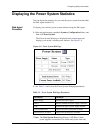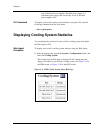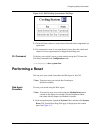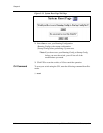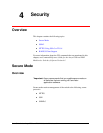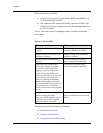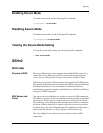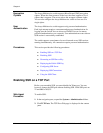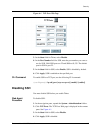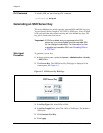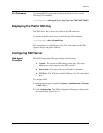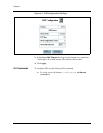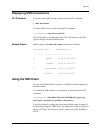
4-2 User Guide for the Avaya P580 and P882 Multiservice Switches, v6.1
Chapter 4
When secure mode is enabled:
■ All non-secure protocols, such as Telnet, HTTP, and SNMPv1 and
v2 are automatically disabled.
■ You cannot use IP to manage the standby supervisor module. Any
IP interfaces that you configured to access the redundant supervisor
module are deleted.
Table 4-1 describes exactly what happens when you enable and disable
secure mode.
This section contains the following information:
■ Enabling Secure Mode
■ Disabling Secure Mode
■ Viewing the Secure Mode Setting
Table 4-1. Secure Mode
When you enable secure mode... When you disable secure mode...
SNMP v1 and v2 are automatically
disabled.
SNMP v1 and v2 are automatically
reenabled if SNMP v3 is enabled.
SNMPv3 remains in its current state
(enabled or disabled).
SNMPv3 remains in its current state
(enabled or disabled).
HTTP and Telnet are automatically
disabled.
HTTP and Telnet remain disabled
until you manually reenable them.
SSH and HTTPS remain in their
current state (enabled or disabled).
If you do not enable SSH before
logging out, you can manage the
switch only by using SNMP v3, if
enabled, or the console port. The only
way to disable secure mode at this
point is by entering the no secure
mode command at the console port.
If you enable SSH before logging out,
you can manage the switch (and
disable secure mode) by using an SSH
session.
SSH and HTTPS remain in their
current state (enabled or disabled).
You cannot use Telnet or the Web
Agent to manage the standby
supervisor. Any IP interfaces that you
configured to access the redundant
supervisor module are deleted.
Any IP interfaces that were deleted
when you enabled secure mode remain
deleted.



